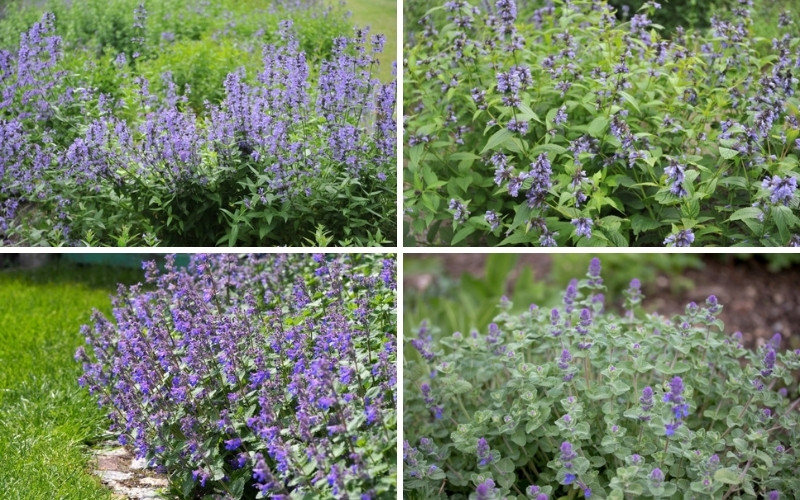
If you have ever seen catmint with its bountiful green foliage and clusters of small purple flowers, you may have mistaken it for lavender at first glance.
Catmint is found in gardens and is favored not only for its visual appeal but also for its herbal properties.
A little catmint tea may offer a host of health benefits, and the herb is also used to flavor soups and sauces.
Read on for five of the most common varieties of this hardy perennial and the best way to care for each.
Faassen’s Catmint (Nepeta x faassenii)
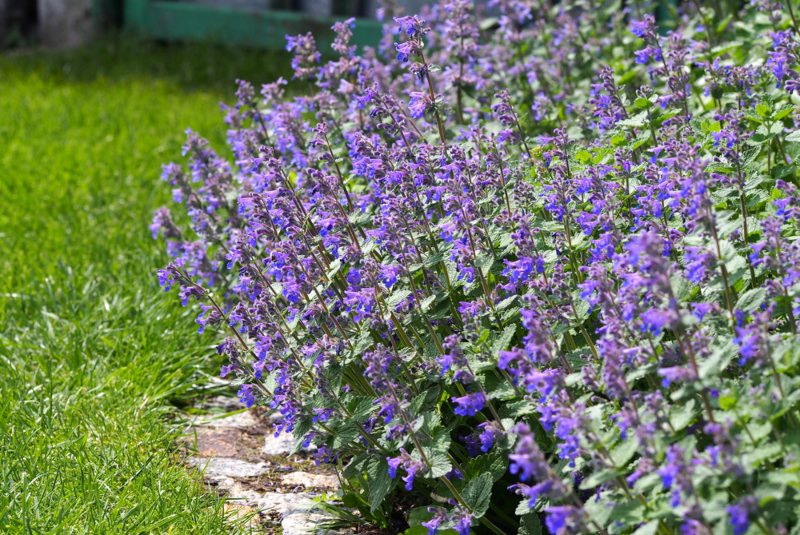
The most common catmint cultivar is Faassen’s catmint. This perennial blooms purple-blue flowers and stands 12 to 24 inches tall. Unlike other catmint, the flowers of Faassen’s catmint do not self-sow and do not require deadheading. While the plant produces some nepetalactone, the happy cat intoxicant in catnip, it is typically not enough to drive cats wild. Instead, Faassen’s fragrant flowers will attract bees, butterflies, and hummingbirds to your yard.
Faassen’s catmint thrives on medium-dry to well-drained soil. Southern planters should find a partially shady spot for their Faassen’s catmint, and Northern gardeners should grow their plant where there is plenty of sun. The flowers bloom from late spring to early fall. It has a fast growth rate and spreads two to three feet. This speedy growth rate allows the plant to spread fervently if unmaintained. It is hardy in USDA plant hardiness zones 3 through 8.
Siberian Catmint (Nepeta sibirica)
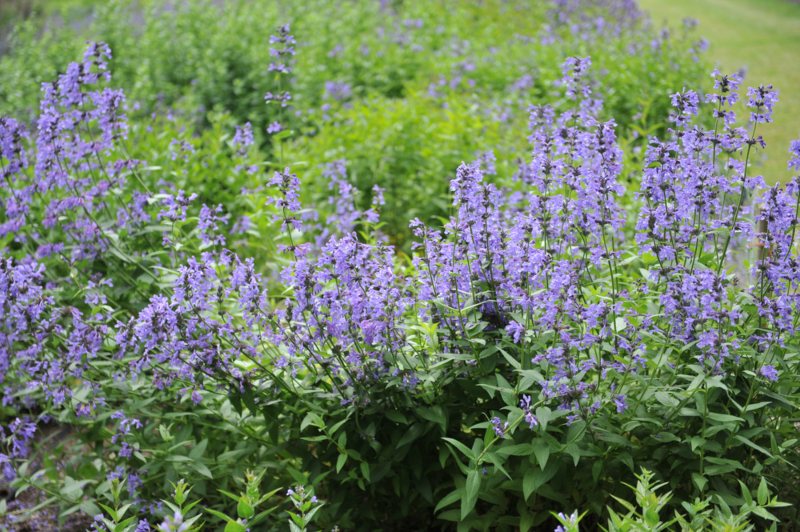
Walking by a plant up to four feet tall and full of beautiful blue flowers, you probably wouldn’t expect to catch the scent of cinnamon, but you just might with Siberian catmint.
Siberian catmint grows best in a group, with full sun or partial shade. It’s a tough plant, resistant to both deer and drought (and cats). It will, however, bring the birds and butterflies around. Siberian catmint appreciates medium, well-drained soil and full sun.
This low-maintenance plant grows one to two feet and will reseed. To maintain your catmint, deadhead spent flowers in early spring. These perennials are best used in ground covers, borders, and gravel gardens. It is hardy in USDA plant hardiness zones 3 through 8.
Japanese Catmint (Nepeta subsessilis)
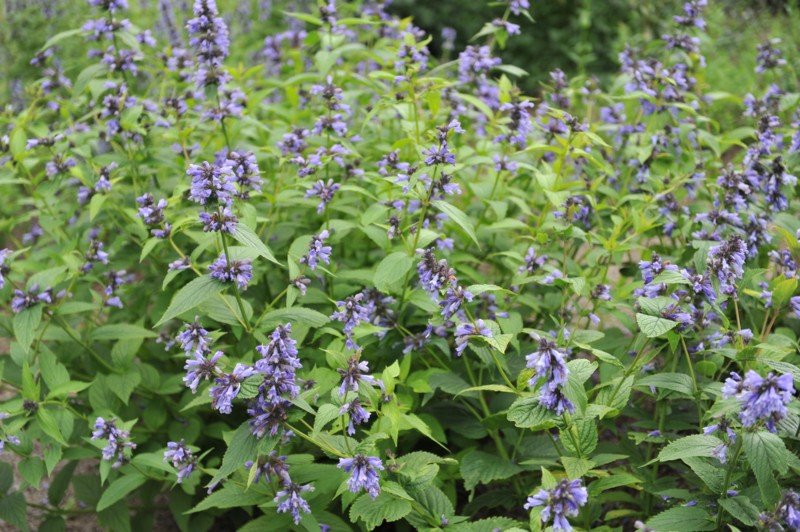
Unlike its Siberian cousin, this variety of catmint comes from a damp Japanese environment and does well in cool, moist areas. Though it is fairly drought resistant, don’t let your Japanese catmint plant dry out between waterings. This plant will do well in pots, growing to about two feet tall. Compared to other catmint species, the Japanese variety is known for its larger tubular clusters of deep purple-blue flowers.
While your cat may be intrigued by this beautiful bloom, its real admirers are bumblebees, butterflies, and other pollinators. Grow this short-stalked catmint in full sun or partial shade. To support re-flowering in the fall, hard prune your catmint in July. This clumping plant is best used in borders or containers.
Japanese Catmint is hardy in USDA plant hardiness zones 3 through 9.
Greek Catmint (Nepeta parnassica)
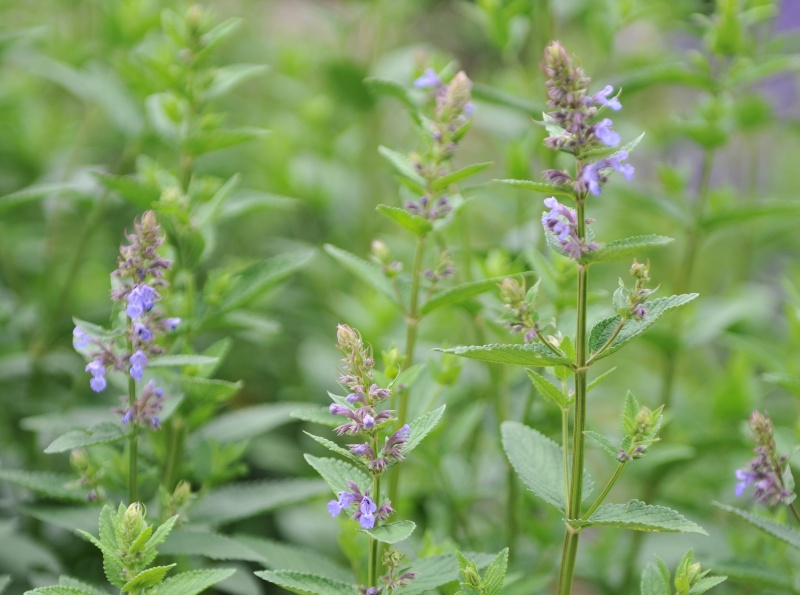
Greek catmint could be described as the big brother of the species. This plant grows up to six feet tall and over three feet wide. Originating from Greece and Albania, this variety is opposite to its Japanese cousin. It does best with full sun and doesn’t need a lot of moisture. You’ll see this massive plant in its prime from midsummer to early fall, with classic pink and purple-blue blooms.
The plant is clump-forming and upright with glossy, green foliage. Giving off a sweet scent when crushed, Greek catmint attracts bees, butterflies, and birds, along with some cats. It is well suited for wall sides, trellises, and rock beds. To support re-flowering, cut back flowers after blooming. Greek catmint is hardy in USDA plant hardiness zones 5 through 9.
Persian Catmint (Nepeta racemosa)
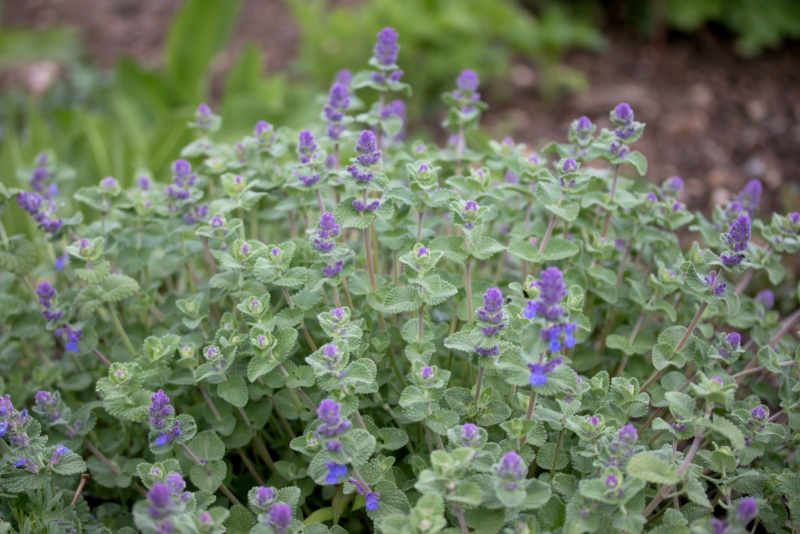
Another long-blooming perennial, the sweet-smelling Persian catmint is native to southwestern Asia. Blooming through the spring to fall season, this low maintenance plant requires little water, full sun, and well-drained soil. It is also deer repellent and drought resistant. Blossoms range in color from white, lavender-blue, and deep purple flowers that bloom on gray-green, upright stems.
This perennial grows one to two feet tall and spreads one to two feet. Loved by hummingbirds and butterflies, Persian catmint enchants with its clump-forming blossoms. It is best used for rock and gravel gardens, ground covers, and beds and borders. Persian Catmint is hardy in USDA plant hardiness zones 4 through 8.
Conclusion
Both catnip and catmint are members of the mint family. However, while catnip has a reputation for alluring cats, catmint is known for beautifying gardens. Though sensitive cats may be stimulated by certain catmint species, these plants are usually reserved for garden beds.




